sus·tain·a·ble de·vel·op·ment: Development that meets the needs of the present without compromising the ability of future generations to meet their own needs
Ch. One
Meet Chimi
Standing at just over 3 feet and weighing 41 pounds, Chimiqui is a healthy 5-year-old boy. But it wasn’t always this way.
Feed My Starving Children first met Chimi when he was an infant, so malnourished and sick our staff did not think he would survive his first year.

Five years later, he can keep up with the best of them.
When we saw him this summer, he was running and laughing in his favorite outfit – a Batman T-shirt and no pants. We asked his mother, Carmen, if he was well behaved and she simply laughed because Chimi is mischievous. He is energetic, and he is feisty.
She pointed to a small stove in front of their sheet metal home. “That’s where Chimi likes to cook his own MannaPack,” Carmen said.
We asked her what Chimi likes to do and she motioned, while laughing, that he loves to eat – especially MannaPack and meat.

Carmen has four kids, and their father left shortly after Chimi was born. The family was devastated and struggled to make ends meet with what the grandfather earned in the sugarcane fields.
There was a time where [Chimi] was so frail we thought he would not make it. All we had was faith. The program from Feed My Starving Children came right on time for us.
The air in Chimi’s village, Batey 106, is sometimes heavy with smoke from burning sugarcane fields.
Once the cane is burned, it has to be cut immediately so it doesn’t go bad. This is one way the “cutters” create work when there is none because the companies that own the bateyes control when and how much sugarcane is cut.
It’s one of hundreds of these small communities of mostly Haitian immigrants working in the sugarcane fields. They have been referred to by some as labor encampments, shantytowns and sugar plantations. But community leaders in Batey 106 prefer simply, “village.”

Chimi is one of hundreds of children in this batey of about 500 people in the eastern region of the Dominican Republic who won’t know hunger, who won’t even remember the pangs and who can dream of a future beyond cutting sugarcane. ![]()
And Chimi was, in part, the catalyst for FMSC’s Project Based Food Assistance (PBFA), the program that has empowered the batey’s own community members to transform this once struggling sugarcane community.
Ch. Two
‘A Sweet Life’
It’s breaking your back, but if you have a family to take care of, it’s the only way to make money.
It's dusk, and the batey is starting to quiet down. Roosters that have been crowing all day retire for the evening. Children's games pause for the day as they run home. Men wearing tall rubber boots, carrying machetes start to appear from seemingly nowhere. They ride up on horses, walk out of the fields and climb off buses.
The back-breaking work of cutting sugarcane is done for the day.
“Cutters” often arrive at the cane fields as early as 4 a.m. Sometimes they go while it's still dark to beat the heat of the blazing sun.

They are paid around 600 pesos per load they produce, which is split between a team of five or six men. The workload is inconsistent, and the season only lasts around six months. Depending on a variety of factors, a cutter can bring home the equivalent of $10 a week or $10 a month.
Cutters live with their families in bateyes, housing provided by the industry owners. Most bateyes lack electricity and running water.
Batey 106 is unique. It has been privately owned by the same family since it began in 1902. This private ownership allows for more freedom in the community – like the partnership with Feed My Starving Children.
And the homes in Batey 106 are being built by another FMSC partner, Good Samaritan Hospital in nearby La Romana.
“Growing up in a batey was a sweet life,” CEO of Good Samaritan Hospital, Moises, said with a chuckle. “You eat sugarcane in the morning, afternoon and dinner time.”
But his laughter faded as he shared that growing up in a batey meant you would only get to attend school until fifth grade, leaving no choice but to grow up and cut sugarcane – a line of work that, in so many words, few desire to pass on to their children.
A Long and Complex History
The industry has a long history that includes dictatorships, immigration tension and accusations of slavery.
The sugarcane industry began developing after World War I, a time when the United States, which initiated the practice of recruiting Haitians to work on Dominican sugar plantations, occupied the country.
At the same time, the Dominican Republic was becoming a major sugar producer because the beet sugar industry in Europe was destroyed in the war.

'American Sugar Kingdom'
In his book "American Sugar Kingdom," author Cesar J. Ayala asserts that the burgeoning sugar industry permanently changed the country's landscape, social structure and economy.
North America's interest in Dominican sugar production quadrupled the country's production after the war.
A reliance on Haitian labor has lasted to this day, even though the U.S. withdrew from the DR in 1924. Tens of thousands of Haitians continue to migrate to the Dominican Republic each year.
And the U.S. remains the most important market for the sugarcane industry.
In 2016, the Dominican Republic produced close to 600,000 tons of sugarcane, according to a USDA report. After in-country consumption, 100 percent was exported to the U.S.

From Sugar to Resorts
The Dominican Republic has been one of the fastest growing economies in Latin America, but the country is still challenged by income inequality, high unemployment and underemployment.
These days, the service sector has overtaken agriculture as the DR's main economic driver. The hospitality industry is booming, and the community leaders of Batey 106 know this.
Travel and tourism created just under 200,000 jobs in the DR in 2016. This number is expected to balloon to 236,000 by 2027, according to the World Travel and Tourism Council.
Batey 106 community leaders asked for English and cooking classes to teach skills besides cutting sugarcane. These new skills will most certainly provide a wealth of opportunities for the next generation of Batey 106 families as the hospitality industry continues to grow.
Young people used to leave the batey in droves, looking for a better life.
They left because there wasn’t anything. Now with these classes, people believe they can create a future for themselves. Now people have dreams and goals.
Ask anyone in the batey and they will tell you these classes – and the future they provide – are made possible by “the program.” They’re referring to FMSC’s PBFA initiative.
Ch. Three
Hope Starts with Food
In 2013, FMSC staff traveled to the Dominican Republic for the first time. FMSC partner Cross International brought them to Batey 106, where they were distributing MannaPack Rice.
Batey 106 was different because it was very poor compared to other bateyes in the area.
Houses were pieced together from metal sheets. There was no electricity. Children would eat one meal a day, and many times it was hard to find that.

Historically, people living in bateyes face critical challenges related to health, education, social issues and employment, partly because of their immigration status in the country.
In 2013, the Dominican Constitutional Court retroactively revoked citizenship for children born to foreign parents as early as 1929. It left an estimated 210,000 people of Haitian descent stateless. Most have never been to Haiti, yet they could be deported there at any time.
Hope is > isolation
It’s easy to drive by Batey 106 and not know it’s there. Set back from a country road and surrounded by sugarcane fields, there’s only a crumbling statue of a lion and sign obscured by sugarcane stalks to mark the entrance. At first, they were apprehensive because Batey 106 wasn’t a place that people visited.
FMSC continued to visit Batey 106 a few times per year, building relationship and trust. Now, when Junior walks through the community, they ask about his kids by name or teach him new words in Dominican Spanish.

FMSC was already piloting the PBFA program in the Philippines, so when it was time to pick a second community in 2015, the choice was clear. Cross International volunteered to pay for the shipping of MannaPack Rice for the duration of the project.
Through FMSC’s PBFA initiatives, distribution partners, churches and local leaders within a specific region come together to help their community. For a period of time, individuals and communities receive a consistent supply of FMSC food to empower them to rise out of poverty and become self-reliant.
The project uses FMSC food as a platform to get the people from A to B. When we say 'food is hope,' that's not just a slogan. We're using the food to get the people to rise up.
At the start of the PBFA in Batey 106, 35% of children were malnourished. Halfway through the initiative, the percentage decreased to 24%*
Ch. Four
The Committee
It was difficult. There wasn’t a lot of help. There wasn’t a lot of jobs. The only job was cutting sugarcane, and that didn’t pay well. But now people are working outside the batey and that is changing the quality of life.
Afternoon sunlight peeked in the slatted windows and bounced off the chalkboard green walls of the primary school at Batey 106. School was out for the day, so a group of pastors, teachers and various community leaders gathered for a meeting.
This influential group is called, simply, the committee.

The committee sat at desks in circle formation. They were meeting to discuss progress and challenges of the PBFA, as the program begins to near completion.

‘You are Giving us Knowledge’
A big part of the PBFA, also known in the community as “the program,” is educating young people in practical skills so they can become independent and pursue jobs outside the batey.
Two ways the committee decided to achieve this sustainable development were through developing English and cooking classes.
Now in their first year and fourth month respectively, the English and cooking classes are well loved by the rest of the community.
You are giving us knowledge, not just nutrition.
Several nights a week, the toughest 17-year-old boys who used to get into fights can be found inside the church-turned-classroom gently cracking eggs into a mixing bowl.

The class has three phases over the course of six months. First, they start with the basics before moving on to more difficult recipes.
The two chefs believe in teaching theory and practice to the upwards of 37 kids that show up to the classes.

My wish is first to have a love for what they do, and eventually for them to find a job. I just hope they leave with a love of cooking.
Many young people in Batey 106 participate in both the cooking and English classes. This combination is the best way for them to pursue jobs outside of cutting sugarcane.
There are 20 students divided into two groups in Pastor Jeorge’s English class.

Jeorge believes the ability to speak English is the number one thing for kids in the batey to learn.
The fact that they feel like they can communicate... when they see they can speak English, they see hope.
The pastor and English teacher also worked for many years as a waiter in the hotels. He brings this knowledge to the classroom by also teaching the students how to work in a bar or a restaurant.

The objective is to get jobs.
And it’s working. Five students who have taken his class are already working outside the batey.
Meet the Community Leaders
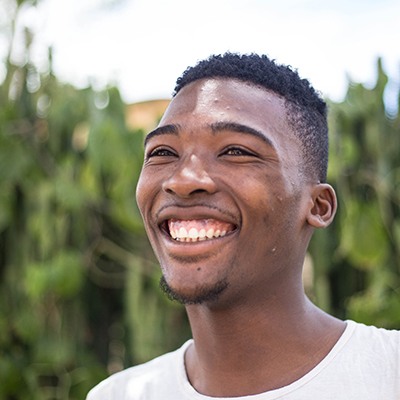
Ishmael
If you ask 21-year-old Ishmael what he wants to be when he grows up, first he will tell you that he’s already grown up. Then he’ll rattle off a list of a dozen career possibilities and ideas for his future. But more than anything, Ishmael wants to be a leader in Batey 106 and in the Dominican Republic – an identity he doesn’t realize he has already begun to achieve.
“When people ask what you want to do with your future, it means they can see you have a future,” he said.
Before the cooking and English classes were available in Batey 106, young people would leave, Ishmael said. But now, he said, they have a future.
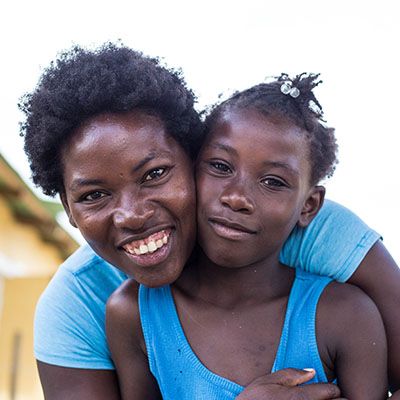
Rosa
Rosa remembers watching her older sister get married at 13 years old. And it wasn’t just her, she said.
Rosa has lived in Batey 106 her whole life and seen girls as young as 12 get married and have babies.
“You would see children carrying children, and this caused a lot of problems,” the 29-year-old committee member said. “They knew that was the only way they could find what they were looking for and be taken care of.”
But it’s different now.
“This project has done a big thing for the females of this community,” she said about the PBFA. “Now there’s a mentality with the young girls that there is more.”
And it’s personal for Rosa as a mom of three girls ranging in age from 10 months to 9 years.
She dreams that her daughters can achieve what she wasn’t able to, and now she knows they have that opportunity.
But the project has also revitalized her dreams. She is currently finishing secondary school and has plans to study psychology.
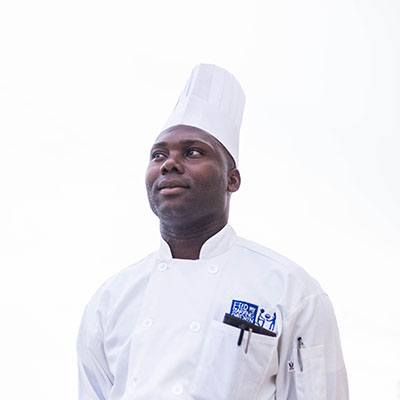
Chef Candito
Candito was born and raised in Batey 106. When he was young, he left the batey looking for a better life.
He found a scholarship and became a pastry chef at a high end resort in La Romana. He comes to Batey 106 after work a few days a week to teach the youth how to bake so they can get jobs in the booming hospitality industry.
“I feel very proud to be here and be an example for them to follow,” Candito said. “The kids have a goal, have dreams to learn something. When I was here there wasn’t that.”
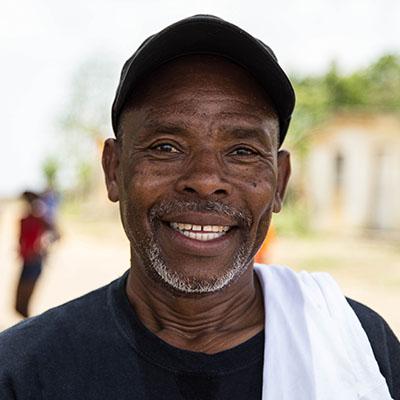
Pastor Mede
When Pastor Jean Mede moved from Haiti to the Dominican Republic 35 years ago, he made a promise to God to serve him. He pastors a church where he lives in a city about 20 minutes away from Batey 106.
He has been a faithful partner of FMSC’s since 2009, and has worked tirelessly to ensure the PBFA in Batey 106 has been fruitful.
This summer, he showed an FMSC team two bateyes he brings MannaPack meals to. Afterward, we piled in to his car. He put the keys in the ignition and said, “Let’s go home.”
We were headed to Batey 106.
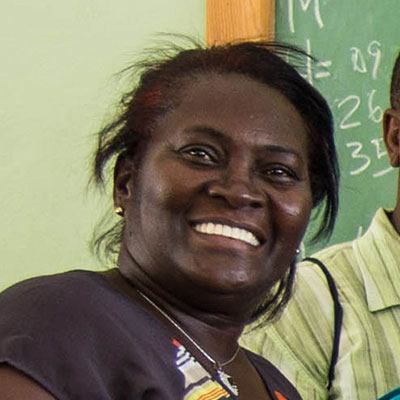
Estela
Estela grew up going to the bateyes with her father, who instilled in her a passion for serving others.
In 1987, she married a man who shares that passion. Together, Estela and Pastor Mede work in thirteen bateyes, including Batey 106.
Estela brings her energy and enthusiasm to everything she does as a second grade teacher, mother of two adult children and proud grandmother, but it's especially contagious when she talks about Batey 106. "I love the bateyes and that's why I'm working in a batey," she said, laughing.
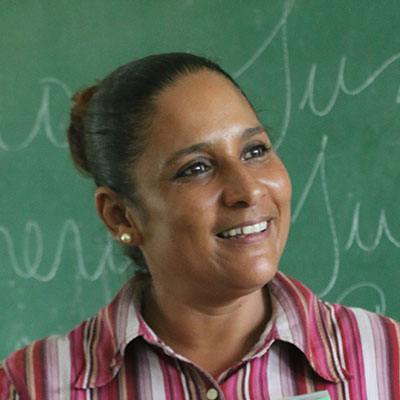
Maribel
“I have seen that the batey has been able to advance very quickly,” Maribel said.
She noticed a dramatic change since her students have been eating regularly. They pay more attention to the classes and think and act differently.
Maribel remembers that before the PBFA, her students only ate one meal a day and often struggled to get even that.
“Now they have something they can give to their children every day,” she said. “It’s been a great blessing and only God could have done something like that to bring an organization like FMSC into this community.”
Instagram gallery powered by SnapWidget
See more photosCh. Five
Fields of Dreams
I never thought I would have dreams...
Hope starts with food, but it certainly doesn’t end there. The future is bright for the kids of Batey 106 because of an investment you made when you spent two hours packing meals. Because of the money you raised for your birthday. Because of the dollar you dropped in the donation box.
As 21-year-old Ishmael said:
At FMSC, we believe that food assistance and community development work together.
“There’s all this space on the spectrum between relief and development, said Matt Muraski, VP of International Programs and Supply Chain at FMSC. “FMSC thrives across the entire continuum.”
We embrace the complexities within the larger conversation about relief and development. Our PBFA initiatives, like the one in Batey 106, connect these dots to create multifaceted solutions to hunger.
Hope is Greater
Hope is greater than drought and famine and disease. It’s greater than earthquakes and hurricanes. It’s greater than the isolation experienced in places like bateyes. And it’s greater than hunger.
Thank you for believing this. Every time you put on a hairnet and pack meals or write a check or drop a quarter in a bucket, you are saying, "Yes. Hope IS greater."
What you do makes a difference. We need you more than ever as conflicts and natural disasters continue to wreak havoc in the lives of children around the world.
Whoever believes in me will do the works I have been doing, and they will do even
greater
things than these...
Ch. Six
The Champions
You do so many creative things to feed hungry kids and empower communities just like Batey 106 all around the world. You donate proceeds from your business. You sell lemonade, bracelets and plants. You give hope.
You are a hope champion.
We see you and we want you to know we are grateful for all you do.
And we are serious about every resource God gives us through you to feed more kids.

Being a Hope Champion is easy!
Get creative
Share on social media with #FMSC #HopeIsGreater #HopeChampion
Feed kids!
Become a Hope Champion
Fundraise for FMSC!
Credits
Katie Koranda
Photographer, writer, project lead
Bridgette Springer
Writer, project lead
Jeff Locklin
Web designer & producer
Hanna Christianson
Assistant digital producer
Kristen Tersteeg
Creative lead
Jon Zaugg
Videographer
Junior Obrand
Project consultant
Sources
Andy Webb-Vidal, “Cane Cutters Seek Sweet Life,” Financial Times
César J. Ayala, “American Sugar Kingdom,” The Dominican Republic Reader, Eds. Eric Paul Roorda, Lauren Derby and Raymundo González
C.I.A. World Factbook
Rojas, Ricardo (2013, October 13). Dominican court ruling renders hundreds of thousands stateless. Reuters. Retrieved from https://www.reuters.com/article/us-dominicanrepublic-citizenship/dominican-court-ruling-renders-hundreds-of-thousands-stateless-idUSBRE99B01Z20131012
Sugar Annual 2017, USDA Global Agricultural Information Network
Travel & Tourism Economic Impact 2017 Dominican Republic, World Travel & Tourism Council
Special thanks to the University of St. Thomas Library system for graciously supporting our research.

We're honored to have won a 2018 MarCom Gold Medal for this project.
